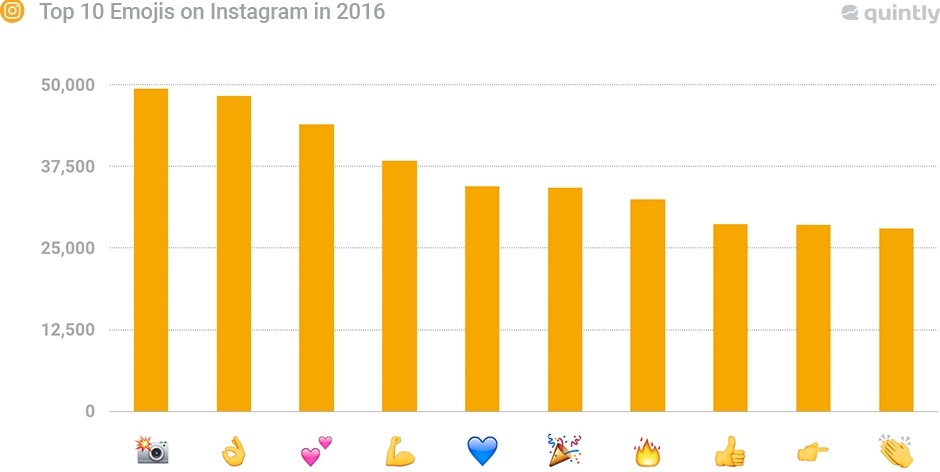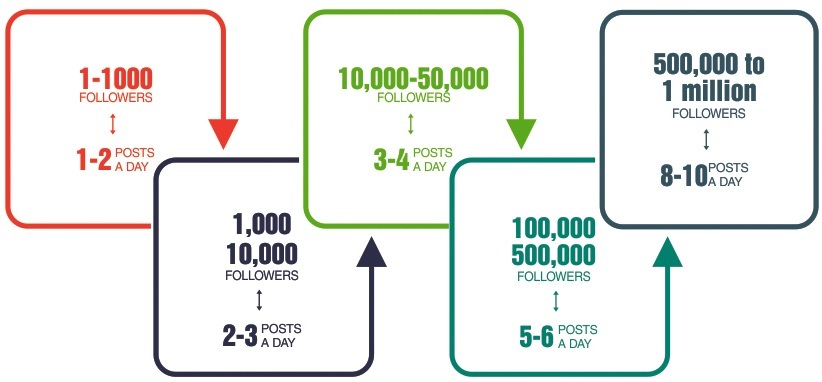The last year 2016 was quite a roller coaster for search marketers due to substantial and unforeseen changes took place in paid search marketing, for both Google and Bing platforms. Taking into consideration these changes and their impacts, at the start of the year 2017, lot many people have published numerous posts regarding most prominent and top SEO trends to watch out for. Various predictions were made on SEO, search engine, and ranking algorithms. Now, we are halfway through the year 2017. The exciting part is most of the anticipated trends proved to be of significance for SEO.
Here we present the most talked SEO trends and how it proved their prominence in this year:

1. Video content is booming
People love audio-visual content over textual content. As predicted at the start of the year 2017, many established as well as newbie brands are banking their advertising campaigns on video content. With so many active social networks like Instagram, Facebook, and Snapchat where people love to share their stories, how come brands stay behind this trend?
Crowdcart is quite prominent in the race of video advertising. Crowdcart helps to connect and engage with your audience through LIVE video. It enables to teach, share, and connect over webinars, Q&As, live courses, and summits.
Coming back to video advertisements, popular brand Coca Cola’s advertisement #LiftTheFeeling has gone viral on digital media. The video garnered over 20 million views (around 12+ million views on official YouTube page and around 9 million views on the Facebook page of Coca Cola) in just two days of the advertisement.

The ad titled ‘Elevator’ has been made under the ‘taste the feeling’ campaign keeping the Indian audience in mind. It is about a tale of togetherness between two strangers, a celebrity and a diehard fan. The video content focus on those two strangers who meet up in an elevator and coca-cola helps them to break the ice and make the connection between them. Since it was an elevator, they promoted it as ‘lift the feeling’. The amazing dance and music quality make video content more interesting.
Before the digital launch of the ad, teasers of the campaign sent the consumers in a dither guessing what is next. Creating curiosity amongst viewers, the launch on digital media had consumers liking, sharing, and commenting persistently, which resulted in greater engagement between consumers and the brand.
Later on, the ‘Taste the Feeling’ campaign was featured by more than 200 countries across TV, outdoor, print, retail signage and more.
Here is the curated list of the most popular video ads (visual marketing) on YouTube in the year 2017:
Samsung: This is a phone (March/April 2017)
A Better Super Bowl | NFL Hyundai Super Bowl LI (February 2017)
2017 Kia Niro | “Hero’s Journey” (February 2017)
2. User-generated content is shared and perceived most
If you serve what your audience is seeking, you are surely going to rock with all your campaigns. But, how to know what they are looking for? There is a marketing gimmick called user-generated content. User-generated content (i.e. UGC) comprise any form of content that is created by users and consumers about a brand or product. Ask users indirectly what they want and accordingly tailor your content marketing and SEO content.
Especially on Instagram, UGC is highly prevalent, shared, and perceived. UGC generates more engagement on social media and from there attract more organic traffic towards the website.
According to HubSpot, 76% of individuals surveyed said they trusted content shared by “average” people more than by brands, and nearly 100% of consumers trust recommendations from others.
Let us take a glance over how SEO can be benefited with the help of user-generated content.
Wayfair, an online furniture store, is one of the world’s largest online destinations for the home decor. Wayfair is running a fun UGC campaign since 2016 to boost its online sales. Basically, this campaign intends to let customers display their online shopping experiences using hashtag #WayfairAtHome. Many buyers who did online shopping posted millions of content using this hashtags. This hashtag is highly popular on Instagram, Pinterest, and Twitter. And, in June 2017 also, people are highly using this hashtag to convey their experiences. Lots of UGC is available for this brand and it is cashing on it through varied advertisements.
Here, are some of the recent examples posted on social media:

Whatever hashtags are posted on social media by users, they all are reposted by the brand with relevant hyperlinks that can drive organic traffic and boost conversions. The user-generated content serves two-way benefits – it acts as testimonials plus it provides an exact idea of what they want and how they feel about the specific product/service.
3. Intense content paves a smooth road for SEO
“Don’t optimize your keywords, optimize your content”. This was emphasized as one of the top SEO trends for the year 2017. Unlike past years, the focus has shifted on comprehensive and long-form content for SEO to provide value to the readers. On the other hand, search marketers can also have a higher number of Backlinks and internal links in the intense and long-form content, which eventually boost their SEO. Airstream is a popular and iconic American brand, dealing in Travel Trailers and Touring Coach. Their policy is “Let’s not make any changes, let’s make only improvements!” They well applied their philosophy for their content to boost their conversions. They were not much worried about the number of visitors, but their real challenge was their conversions.

According to Hileman, the team needed content that would appeal to people who were higher up in the funnel. They did take help of lifecycle content (by developing gated and lifestyle-centred eBooks, revamped newsletters) to boost their conversions. The new content they created included guides — such as “Road Trips Across the U.S.” and “Farms & Wineries” — as well as ebooks like “Why Airstream?”
Their textual content was beautified by adding image content. Earlier they discovered that inclusion of an image of the cover of the eBook resulted in much higher conversion rates than just a text-heavy page. Later on, they also realized that video headers on a landing page distracted people from performing an action on their CTA buttons. Minor updates resulted in huge conversions, their brochure download conversion rates surprised and satisfied them with good traffic.
4. Personal branding – verified as an undisclosed SEO strategy
Branding makes a huge difference in your overall online impression and foothold. Personal branding is an unexplored yet very powerful tool for your SEO. The biggest benefit it provides is the trustworthiness of the brand. In the digital marketing field, there are some giants who have established their personal branding very well. People just trust their offerings by their names.
Examples include:
Neil Patel: there is hardly anyone who hasn’t heard about him for SEO and digital marketing. He has consistently grown his personal brand through blogging and guest posting on sites like Entrepreneur, Forbes, Inc., etc. Owner of neilpatel.com, quicksprout.com, and crazzyegg.com. Also, a co-founder of hellobar.com and KISSmetrics.com
Rand Fishkin: He is the CEO and Co-Founder of SEOMoz, a leader in the field of SEO tools, resources & community. Furthermore, he is the host of Whiteboard Friday, co-author of a pair of books on SEO, co-founder of Inbound.org, and serves on the board of the presentation software firm, Haiku Deck.
Gary Vaynerchuk: He runs VaynerMedia. He is regarded as one of the well-known entrepreneur personal brands. He’s active on Snapchat and YouTube and his podcasts are everywhere on the internet.
Jeff Bullas: His blog receives over 5 million visitors a year. He helps businesses and personal brands with digital marketing services that include blogs, social media marketing, and search engine optimization.
Larry Kim: He is the founder and Chief Technology Officer at Mobile Monkey. In addition, he is regarded as the most influential PPC expert.
No doubt, building a personal brand takes a lot of efforts and consistency matters. But, one should try it out persistently. A strong and recognizable personal brand can attract tons of organic traffic.
5. AMP does make a significant difference in your SEO
As we already know that Google favours the websites which have switched over to AMPs.
According to Google, more than 50% of search queries, globally, are now take place from mobile devices.
Here’s how 2Dogs Media churn out huge results from improvised SEO due to AMP in place.In November 2016, there were no AMP pages indexed on the website. On 2nd December 2016, they implemented accelerated mobile pages on their WordPress website. They also submitted a new sitemap into Google Search Console so that Google can easily notice the site. On the first day of AMP installation, they experienced website traffic on all 14 AMP indexed web pages.

Not only this, other massive benefits include:
- Within 6 months of AMP implementation, observed much higher CTR on AMP pages as compared to traditional pages
- Improved website speed (earlier non-AMP page load time was 11 seconds which went down to 2.2 seconds for AMP pages, with reduced page size and reduced requests)
- 40% of the traffic on AMP pages was organic (Excluding referral, social and direct traffic sources)
The gist of the entire story is if a greater portion of your traffic comes from mobile, implement AMP NOW! However, even if your traffic sources include both desktop and mobile devices, then also we suggest you go for AMP. This is because we cannot deny the fact that mobile optimization is already extremely important in SEO strategies in 2017.
CLOSING THOUGHTS
The above-mentioned SEO trends are just a portion of the chunk of anticipations. There is a high reliance on other trends as well, which are: voice search, user intent, the influential role of structured data and schema implementation, the influence of artificial intelligence on working of algorithms, local search, cross-channel marketing, and optimization for user-intent. As a general tip, continue to optimize your online presence to boost your SEO.
In case you feel something else can change the scenario of SEO in the rest of the year 2017, do drop in your words in the comments section, we would love to hear from you!











